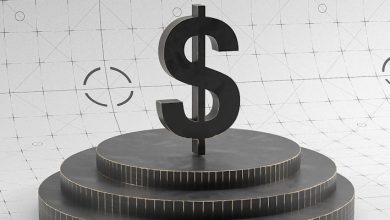How to Use Technical Analysis in Crypto Trading

- Understanding the basics of technical analysis in crypto trading
- Common technical indicators used in crypto trading
- How to identify trends and patterns in cryptocurrency charts
- Utilizing support and resistance levels in your trading strategy
- The role of volume and momentum in technical analysis
- Developing a successful trading plan with technical analysis
Understanding the basics of technical analysis in crypto trading
Technical analysis is a method used by traders to forecast future price movements based on past market data, primarily focusing on price charts and trading volume. In the world of cryptocurrency trading, technical analysis plays a crucial role in helping traders make informed decisions about when to buy or sell digital assets.
By understanding the basics of technical analysis, traders can identify trends, patterns, and key levels on price charts to anticipate potential price movements. Some of the key concepts in technical analysis include support and resistance levels, trendlines, moving averages, and various technical indicators.
Support and resistance levels are price points where a trend is likely to pause or reverse. Trendlines, on the other hand, are lines drawn on a chart to connect a series of price highs or lows, indicating the direction of the trend. Moving averages are used to smooth out price data and identify the direction of the trend.
Technical indicators are mathematical calculations based on price, volume, or open interest that can help traders confirm trends or generate buy and sell signals. Some popular technical indicators used in crypto trading include the Relative Strength Index (RSI), Moving Average Convergence Divergence (MACD), and Bollinger Bands.
Common technical indicators used in crypto trading
When engaging in crypto trading, it is essential to utilize various technical indicators to make informed decisions. These indicators help traders analyze price trends, market sentiment, and potential entry or exit points. Below are some common technical indicators frequently used in crypto trading:
- Moving Averages: Moving averages help traders identify trends by smoothing out price fluctuations over a specific period. The two most commonly used moving averages are the simple moving average (SMA) and the exponential moving average (EMA).
- Relative Strength Index (RSI): The RSI is a momentum oscillator that measures the speed and change of price movements. It helps traders determine whether an asset is overbought or oversold, indicating possible trend reversals.
- Bollinger Bands: Bollinger Bands consist of a simple moving average and two standard deviations above and below the average. They help traders identify volatility and potential price breakouts.
- MACD (Moving Average Convergence Divergence): The MACD is a trend-following momentum indicator that shows the relationship between two moving averages of an asset’s price. Traders use it to identify trend reversals and potential entry or exit points.
- Fibonacci Retracement: Fibonacci retracement levels are horizontal lines that indicate potential support and resistance levels based on the Fibonacci sequence. Traders use these levels to identify possible price corrections or reversals.
By incorporating these technical indicators into their analysis, crypto traders can gain valuable insights into market trends and make more informed trading decisions. It is essential to understand how each indicator works and to use them in conjunction with other analysis tools to increase the probability of successful trades.
How to identify trends and patterns in cryptocurrency charts
To identify trends and patterns in cryptocurrency charts, you need to pay close attention to the price movements over time. One common method is to use technical analysis, which involves studying historical data to forecast future price movements. By analyzing charts, traders can spot trends such as uptrends, downtrends, or sideways trends.
One way to identify trends is to look for higher highs and higher lows in an uptrend, or lower lows and lower highs in a downtrend. Patterns, on the other hand, are specific formations that can indicate a potential reversal or continuation of a trend. Some common patterns include head and shoulders, flags, triangles, and double tops or bottoms.
It’s important to remember that no method of analysis can guarantee success in trading, as the cryptocurrency market is highly volatile and unpredictable. However, by using technical analysis to identify trends and patterns, traders can make more informed decisions and improve their chances of profitability. By staying disciplined and sticking to a trading strategy, traders can increase their chances of success in the crypto market.
Utilizing support and resistance levels in your trading strategy
Utilizing support and resistance levels in your trading strategy can be a valuable tool when analyzing the crypto market. Support levels are price points where a downward trend is likely to pause or reverse, while resistance levels are price points where an upward trend is expected to pause or reverse. By identifying these key levels, traders can make more informed decisions about when to enter or exit a trade.
When trading cryptocurrencies, it is important to pay attention to both historical and psychological support and resistance levels. Historical levels are based on past price movements, while psychological levels are based on round numbers or significant price points. By combining these two types of levels, traders can get a more comprehensive view of the market and make better trading decisions.
One common strategy for utilizing support and resistance levels is to wait for a price to test a level multiple times before making a trade. If a price repeatedly bounces off a support or resistance level, it indicates that the level is strong and likely to hold in the future. Traders can use this information to set their entry and exit points more effectively.
It is also important to remember that support and resistance levels are not set in stone and can change over time. As the market evolves, new levels may form, while old levels may lose their significance. Traders should regularly reevaluate their support and resistance levels to ensure they are making decisions based on the most up-to-date information.
The role of volume and momentum in technical analysis
Volume and momentum are essential components of technical analysis when it comes to crypto trading. Volume refers to the number of units of a particular cryptocurrency that are being traded over a specific period. High trading volume can indicate increased interest and potentially stronger price movements in either direction.
Momentum, on the other hand, measures the rate of change in price movements. It can help traders identify the strength or weakness of a trend. When combined with volume, momentum indicators can provide valuable insights into potential market trends.
By analyzing volume and momentum data, traders can make more informed decisions about when to enter or exit a trade. For example, a significant increase in trading volume accompanied by a strong momentum indicator could signal a potential breakout or trend reversal.
It is important to note that volume and momentum indicators should not be used in isolation but rather in conjunction with other technical analysis tools. By incorporating these indicators into your trading strategy, you can increase the likelihood of making profitable trades in the volatile world of cryptocurrency markets.
Developing a successful trading plan with technical analysis
Developing a successful trading plan with technical analysis is crucial for navigating the volatile cryptocurrency markets. By utilizing technical analysis tools such as moving averages, support and resistance levels, and chart patterns, traders can make informed decisions based on historical price movements and market trends.
One key aspect of developing a trading plan is setting clear entry and exit points based on technical indicators. These indicators can help traders identify potential buying or selling opportunities, as well as manage risk by setting stop-loss orders to limit losses in case the trade goes against them.
It is also important to consider the overall market sentiment and news events that may impact the price of cryptocurrencies. By combining technical analysis with fundamental analysis, traders can gain a more comprehensive understanding of the market dynamics and make more informed trading decisions.
Additionally, traders should continuously monitor and adjust their trading plan based on new information and market conditions. By staying flexible and adaptable, traders can better position themselves to capitalize on opportunities and mitigate risks in the ever-changing cryptocurrency markets.
In conclusion, developing a successful trading plan with technical analysis is essential for achieving long-term success in crypto trading. By utilizing a combination of technical and fundamental analysis, setting clear entry and exit points, and staying informed about market dynamics, traders can increase their chances of profitability and minimize potential losses.



